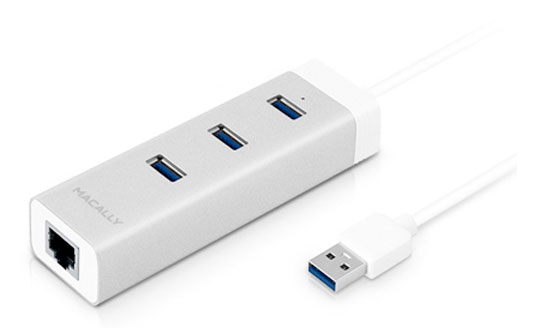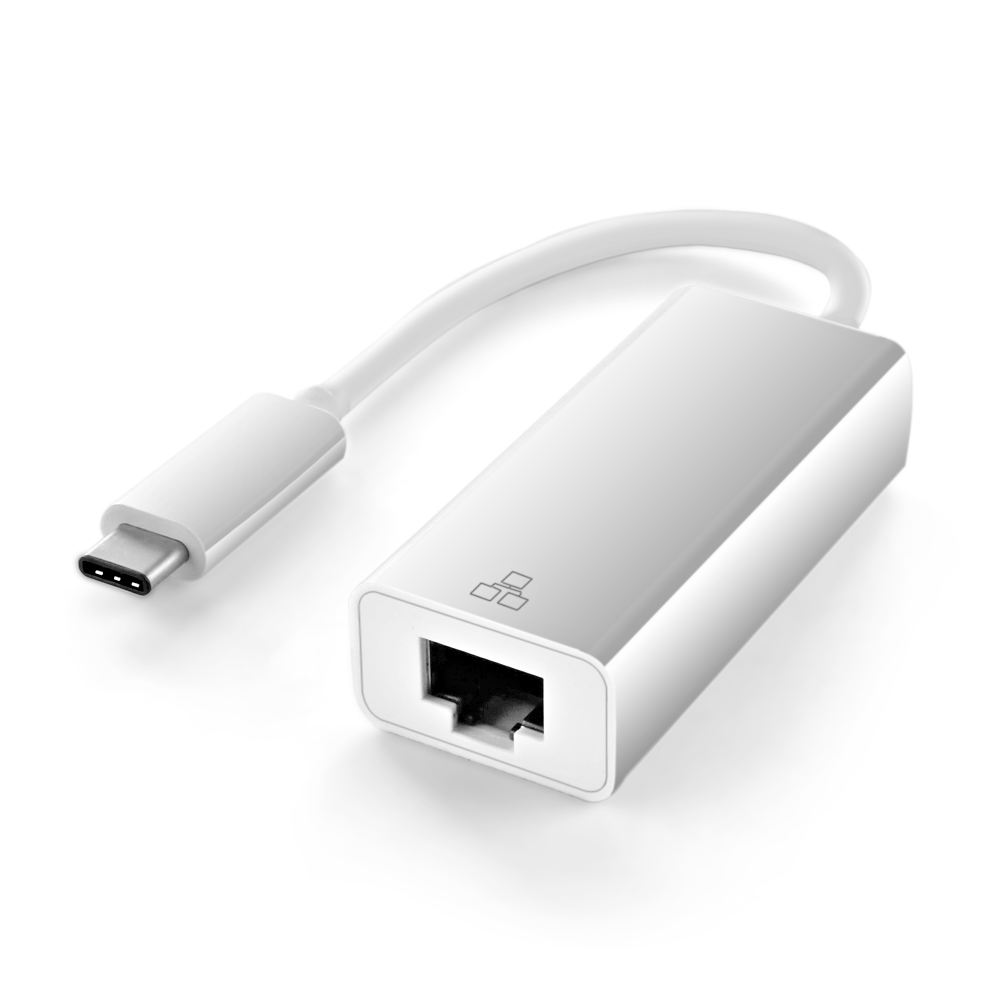Update Oct 2015: Updated for 10.11 El Capitan!
If you bought a cheap aftermarket USB-Ethernet adapter like me and found that it doesn't work on El Capitan or Yosemite, here's what you need to get it going.
- USB 3.0 to Ethernet Adapter, Driver Free 10/100/1000 Mbps Network RJ45 LAN Wired Gigabit Ethernet Adapter for Windows 10, 8.1, 7, XP, Linux, Mac OS, Chrome OS 4.1 out of 5 stars 22 $9.99 $ 9.
- USB 3.0 to Ethernet Adapter,ABLEWE 3-Port USB 3.0 Hub with RJ45 10/100/1000 Gigabit Ethernet Adapter Support Windows 10,8.1,Mac OS, Surface Pro,Linux,Chromebook and More 4.5 out of 5 stars 617 $15.99 $ 15. 99 $19.99 $19.99.
- Supports IEEE 802.3az (Energy Efficient Ethernet) USB to RJ45 adapter supports Gigabit networking over USB 3.0. IEEE 802.3, 802.3u and 802.3ab (10BASE-T, 100BASE-TX, and 1000BASE-T) compatible. Crossover detection, auto-correction (Auto MDIX) and Wake-on-LAN (WOL) Powered solely through the USB port. Three LED indicators independently indicate.
- Looking at the UGREEN Network Adapter; which is a USB 3.0 to Gigabit Ethernet Adapter. Watch as I unbox and setup the device on a Mac and also my first impre.
The JUE130 USB ™ 3.0 Gigabit Ethernet Adapter is a simple, one-piece external adapter that plugs into the USB ™ port on your Ultrabook ™ or MacBook ®. It is the ultimate solution if you do not have an Ethernet port or if you just want to increase your connection speed.

Seriously. You can stop tearing you hair out now. It'll all be ok.
As with all advice on the internet, you can't sue me if this sets fire to your cat or sends ninjas to your house. You're doing this on your own, and I assume no liability or warranty for what you do.
Steps to get your adapter working if you just upgraded to Mac OS 10.11 El Capitan.
- Reboot. As soon as the screen goes black, hold down 'Command' and 'R' until you see a black screen with an Apple logo and a white progress bar. Let go, and wait for your computer to boot into recovery mode.
- From the top bar, select 'Utilities' and then 'Terminal'
- In the terminal, run
csrutil disable. - From the top bar, select '', then 'Restart'
- When you boot back up, you'll have a working adapter!
- Definitely take a read down below to see what's changed in El Capitan, and if disabling SIP makes sense for your setup.
Steps to get your adapter working if you've never used the adapter before in Mac OS 10.11 El Capitan.
- Uninstall the dozens of other drivers you may have installed in the process of trying to get this working.
- Unplug your USB adapter, and reboot and give yourself a clean slate.
- Reboot. As soon as the screen goes black, hold down 'Command' and 'R' until you see a black screen with an Apple logo and a white progress bar. Let go, and wait for your computer to boot into recovery mode.
- From the top bar, select 'Utilities' and then 'Terminal'
- In the terminal, run
csrutil disable. - From the top bar, select '', then 'Restart'
- Once you're booted back up, download and install the drivers from the CD, kindly uploaded by this fine human being.
- Reboot.
- Open your terminal, and run
sudo kextload /System/Library/Extensions/USBCDCEthernet.kext - Reboot.
- Plug in your USB Adapter, with a live ethernet cable.
- Open System Preferences, and go to the Network Pane.
- Hit the + button in the bottom right, select the 'USB 2.0 10/100M Ethernet Adapter', and hit add.
- You're all set! Your adapter works!
- Apologize to the people you care about for the things you've said over the past few hours. They won't understand, but they will forgive you.
Steps to get your adapter working on Mac OS 10.10 Yosemite
- Uninstall the dozens of other drivers you may have installed in the process of trying to get this working.
- Unplug your USB adapter, and reboot and give yourself a clean slate.
- Download and install the drivers from the CD, kindly uploaded by this fine human being.
- Reboot.
- Open your terminal, and run
sudo nvram boot-args='kext-dev-mode=1' - Reboot.
- Open your terminal, and run
sudo kextload /System/Library/Extensions/USBCDCEthernet.kext - Reboot.
- Plug in your USB Adapter, with a live ethernet cable.
- Open System Preferences, and go to the Network Pane.
- Hit the + button in the bottom right, select the 'USB 2.0 10/100M Ethernet Adapter', and hit add.
- You're all set! Your adapter works!
- Apologize to the people you care about for the things you've said over the past few hours. They won't understand, but they will forgive you.
What's going on. (Yosemite Version).
The old drivers still work, no problem, but are being blocked in Yosemite because they aren't 'signed' properly, since they weren't re-issued for Yosemite. As 'unsigned' drivers, Mac OS refuses to load them, saying they constitute a security hazard.
What step 5 does is instructs your computer to set itself to 'developer mode', which allows you to load unsigned kexts. This is a mild security risk, but it should be fine for most people. If you're in doubt, please make the decision that makes the most sense for your security concerns. You might be better off just buying legit Apple hardware so you don't have to disable the security. That's your call.
If you ever do go legit and want to undo it, just run sudo nvram boot-args='kext-dev-mode=0, and things will be back where you left them.
What's going on. (El Capitan Version).
In short, it's the same scenario as Yosemite, just stricter. Apple has a new security mode, called 'System Integrity Protection' (SIP) that prevents anyone - even you with your password - from modifying system files.
The old drivers still work, no problem, but are being blocked in El Capitan because they aren't 'signed' properly, since they weren't re-issued for El Capitan. As 'unsigned' drivers, Mac OS refuses to load them, saying they constitute a security hazard.
The csrutil disable step turns off SIP for your entire system, which allows you to load and use the drivers. This also disables malware protection for your machine, and given that we've started to see genuine malware for OS X in the wild, it's a slightly larger security risk than it was in Yosemite.
If you're in doubt, please make the decision that makes the most sense for your security concerns. You might be better off just buying legit Apple hardware so you don't have to disable the security. That's your call.
If you ever do go legit and want to undo it, just reboot into recovery mode and run csrutil enable, and things will be back where you left them.

Anyhow, after hours of searching and pulling out my own hair, I thought it'd be worth sharing the solution! Enjoy!
If this post helped you out, please do me a favor back (and maybe yourself one, too), and check out my masterclass on living with purpose and going after your big dreams.
It's really, really good. Thanks!-Steven
The adapters and cables in this article work with these Mac computers and iPad Pro devices:
- Mac models that have Thunderbolt 3 ports. These ports support both Thunderbolt 3 and USB-C connections.
- Mac models that have a USB-C port. This port supports USB-C connections.
- iPad Pro models that have a USB-C port. This port supports USB-C connections.
To find the right cable or adapter for your Mac or iPad Pro, use the information below to identify the connector on the end of the cable coming from your display, hard drive, camera, hub, or other device. Check the end meant to plug into your Mac or iPad Pro.
Thunderbolt 3
If you're using an Apple Thunderbolt 3 cable or other Thunderbolt 3 cable with your display or other device, it will connect to your Mac without an adapter.

The Apple Pro Display XDR and LG UltraFine 5K Display use Thunderbolt 3.
USB-C
If you're using a mophie USB-C Cable with USB-C Connector or other USB-C cable with your device, it will connect to your Mac or iPad Pro without an adapter.
The LG UltraFine 4K Display uses USB-C.
USB-A
If you're using a USB-A cable with your device, use the Apple USB-C to USB Adapter, the Apple USB-C Digital AV Multiport Adapter, the Apple USB-C VGA Multiport Adapter, or another USB-C to USB-A adapter to connect your device to your Mac or iPad Pro.
To charge an iPhone, iPad, or iPod touch from a Thunderbolt 3 or USB-C port without one of these adapters, you can use the Apple USB-C to Lightning Cable instead.
Ethernet
If you're using an Ethernet cable with your device, use a third-party USB-C to Ethernet adapter, such as the Belkin USB-C to Gigabit Ethernet Adapter.
Thunderbolt or Thunderbolt 2
If you're using a Thunderbolt or Thunderbolt 2 cable with a Thunderbolt display or other device, use the Apple Thunderbolt 3 to Thunderbolt 2 Adapter.
This is the correct adapter for the Apple Thunderbolt Display.
Thunderbolt and Thunderbolt 2 are not the same as Mini DisplayPort . They have the same shape, but use different symbols on the cable and port.
Mini DisplayPort
If you're using a Mini DisplayPort cable with a Mini DisplayPort display, use a third-party USB-C to Mini DisplayPort adapter. Check with its manufacturer for compatibility with your Mac and display model.
This is the correct solution for the Apple LED Cinema Display.
Usb Ethernet Adapter For Tablet

Mini DisplayPort is not the same as Thunderbolt or Thunderbolt 2 . They have the same shape, but use different symbols on the cable and port.
DisplayPort
Ethernet To Usb Adapter Mac
If you're using a DisplayPort cable with your display, use a third-party USB-C to DisplayPort adapter or cable, such as the Moshi USB-C to DisplayPort Cable.
HDMI
If you're using an HDMI cable with your display, use the Apple USB-C Digital AV Multiport Adapter or a third-party USB-C to HDMI adapter or cable.
Ethernet To Usb Adapter For Mac Os X
VGA
If you're using a VGA cable with your display, use the Apple USB-C VGA Multiport Adapter. Or use a third-party USB-C to VGA adapter, such as the Belkin USB-C to VGA Adapter.
DVI
If you're using a DVI cable with your display, use a third-party USB-C to DVI adapter or cable. Check with its manufacturer for compatibility with your Mac and display model.
Learn more
- You can use your USB-C Power Adapter and charge cable with any Thunderbolt 3 or USB-C port on your Mac or iPad Pro.
- If you have an Apple TV connected to your TV, projector, or other display, you can use AirPlay to wirelessly stream video to that display, or extend the desktop of your primary display.
- Learn about using external monitors with your Mac.
- Learn more about using the USB-C port on your iPad Pro.
